
Roots
The quiet hours of night, when the world settles into slumber, have always held a special significance for hair. Far from being a mere aesthetic consideration, the protection of textured hair during these hours stands as a testament to ancient wisdom, cultural continuity, and a deep, abiding reverence for one’s physical self. This practice, often seen today through the lens of modern hair care, actually possesses roots stretching back through centuries, across continents, and into the very heart of diverse human societies. It is a tradition born from a discerning awareness of hair’s vulnerability and its profound connection to identity, status, and well-being.
For communities where textured hair predominates, particularly those of African descent, the act of preparing hair for sleep was never a casual undertaking. It was a ritual, a necessity, a silent conversation between generations about preserving what was deemed precious. The earliest indications of such practices speak to an intimate understanding of hair’s delicate structure long before microscopes revealed its secrets.
Ancestors intuitively grasped that friction, environmental elements, and mechanical stress could compromise hair’s integrity. Their solutions, crafted from available resources and collective knowledge, laid the groundwork for contemporary protective habits.

Ancient African Practices and Their Enduring Influence
Across the vast and varied continent of Africa, hair was, and remains, a powerful visual marker. It communicated age, marital status, tribal affiliation, social standing, and even spiritual beliefs. The preservation of these elaborate and meaningful styles, often requiring hours or even days to complete, naturally extended into nighttime care.
Women, and sometimes men, would meticulously wrap, braid, or otherwise secure their hair to safeguard its form and health. This foresight meant that the intricate designs, laden with symbolism, could endure for extended periods, reducing the need for frequent manipulation which could cause damage.
Hair protection at night, rooted in ancient wisdom, reflects a deep cultural respect for hair’s significance beyond mere appearance.
Historical accounts and anthropological studies indicate the widespread use of head coverings made from various natural materials. While silk and satin, with their smooth surfaces, are lauded today, earlier communities employed cloths spun from cotton, linen, or even animal hides, often treated with oils or plant extracts to impart a smoother finish or add a protective layer. These coverings served a dual purpose ❉ they shielded hair from dust and debris while sleeping outdoors or in open dwellings, and they minimized the friction that could lead to tangles and breakage.
The practice of oiling hair, a common pre-sleep ritual in many African traditions, worked in tandem with these wraps to maintain moisture and suppleness. This approach demonstrates a holistic understanding of hair health, recognizing that protection was not solely about covering but also about nourishing the strands themselves.

Indigenous American Hair Traditions
Similarly, indigenous peoples across the Americas held hair in high esteem, often viewing it as a physical manifestation of one’s spirit and connection to the earth. Long, healthy hair was a sign of vitality and strength. Nighttime protection varied by tribe and climate, but generally involved methods that minimized stress on the hair.
Braiding, a common practice for both men and women, served as a fundamental protective measure. Long braids, sometimes multiple, kept hair contained, reducing tangling and friction against sleeping surfaces.
For instance, some Native American tribes utilized plant-based oils and greases, like bear grease, to condition hair, which would also have contributed to its preservation overnight. The concept of minimizing daily manipulation, by keeping hair styled in ways that could last for days or even weeks, was a form of protection in itself, and nightly securing was an extension of this philosophy. The reverence for hair was so profound that cutting it was often reserved for specific, significant life events, such as mourning, further emphasizing the importance of its preservation.
Here are some common historical methods for protecting hair at night:
- Braiding ❉ Simple or complex plaits to contain hair and reduce tangling.
- Wrapping ❉ Using cloths or scarves made from natural fibers to cover and secure hair.
- Oiling ❉ Applying natural oils or greases to moisturize and condition strands before sleep.
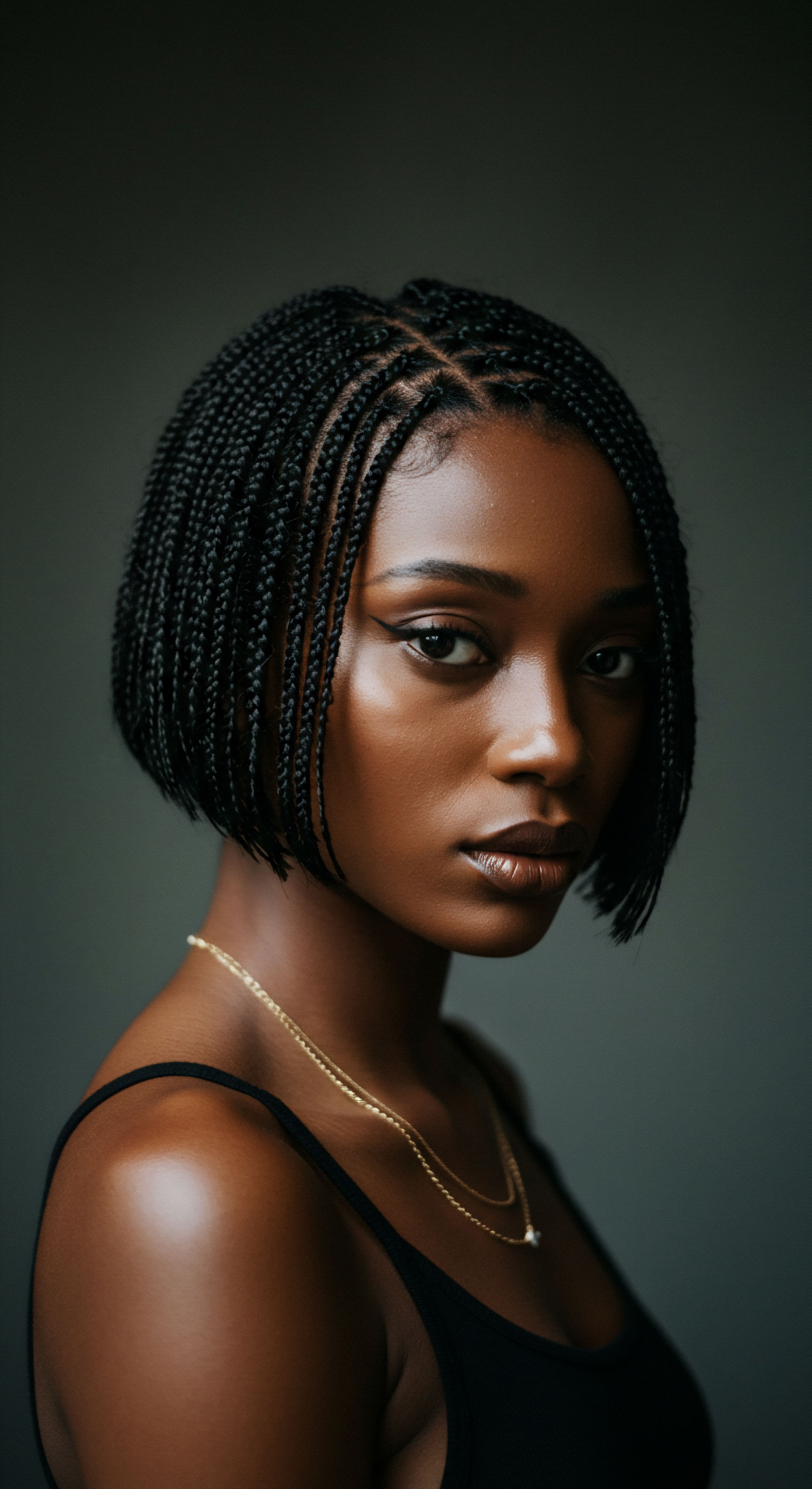
Ritual
Moving beyond the foundational appreciation for hair’s vulnerability, we arrive at the deliberate actions and routines that communities developed to safeguard their strands through the quiet hours. The practice of nighttime hair protection transformed from an intuitive act into a structured ritual, passed down through generations, embodying practical wisdom and a deeper understanding of hair’s needs. This daily or periodic preparation became a testament to cultural resilience and personal care, a moment of gentle attention that transcended mere grooming to become a quiet act of self-preservation.
For many, the nightly routine was not just about preventing damage; it was about honoring one’s hair, a cherished part of their identity. This approach speaks to a continuous conversation between individuals and their hair, a relationship built on care and foresight.
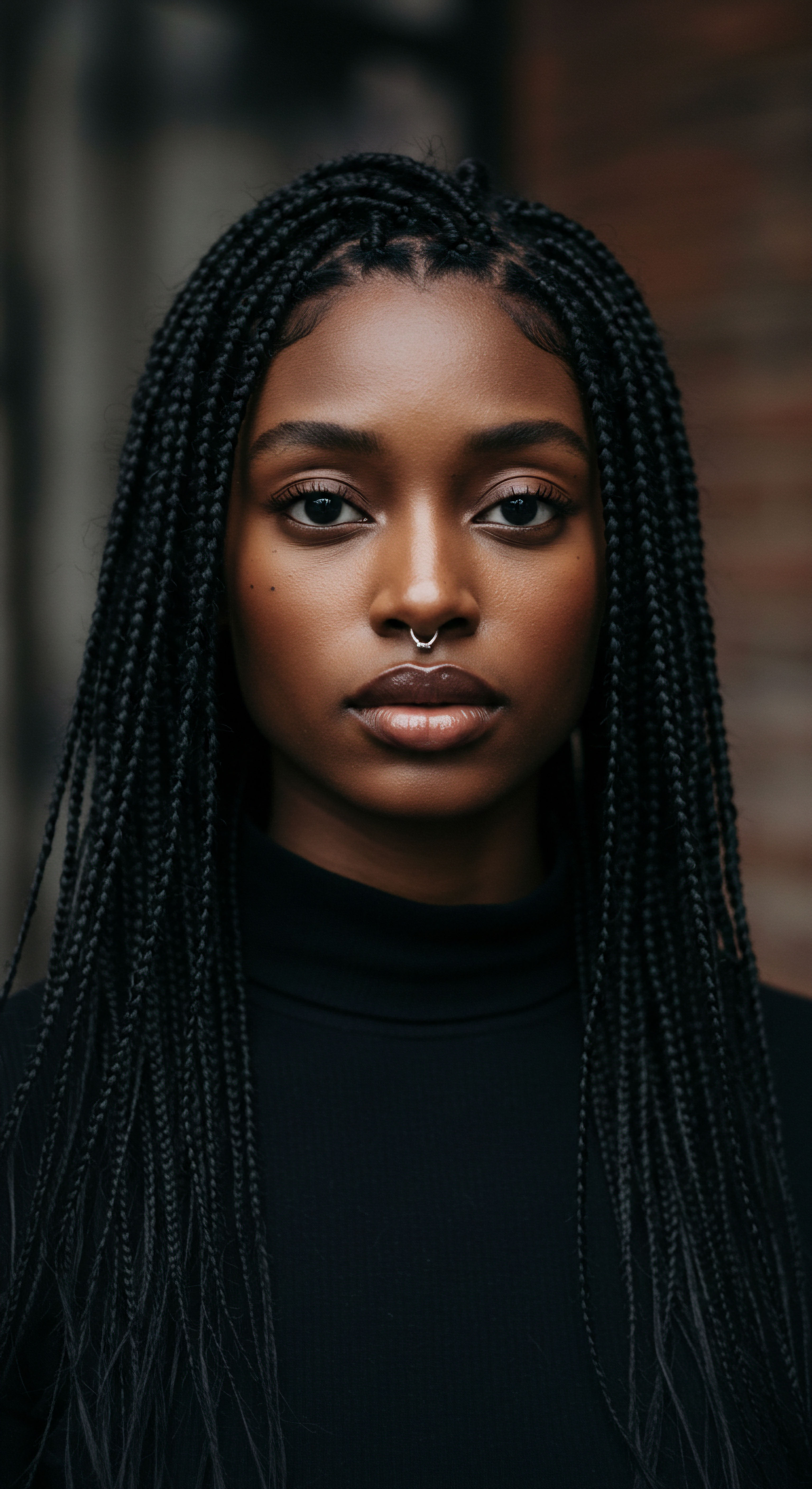
The Evolution of Head Coverings
The simple cloth used for wrapping hair evolved over time, reflecting both practical needs and social changes. In African and Afro-Caribbean cultures, headwraps, often referred to as “head ties” or “dukus,” gained prominence. While serving as symbols of identity, status, and even resistance during periods of oppression, they also provided substantial hair protection. These coverings, when worn during sleep, created a barrier against friction, preventing tangles, frizz, and breakage.
The choice of material for these coverings was often dictated by availability, but the understanding of a smooth surface’s benefits was present. While modern discourse centers on silk and satin, historical evidence suggests that finely woven cotton or linen, when prepared and applied correctly, could also offer a degree of protection. The method of wrapping was also crucial, often involving specific techniques to keep hair contained and secure without causing tension on the scalp or edges.

Why Did Wraps Matter?
The environmental conditions in many regions, such as dry climates or homes with open air flow, meant that hair could lose moisture rapidly overnight. A head covering acted as a micro-environment, helping to seal in moisture from oils or natural emollients applied before sleep. This was a sophisticated, albeit intuitive, understanding of hair’s need for a stable moisture balance. Furthermore, for those with intricate hairstyles, a well-secured wrap meant waking up with a style largely preserved, saving considerable time and effort in daily re-styling, and reducing the mechanical stress of frequent manipulation.
Nighttime hair rituals, particularly head coverings, evolved from practical needs into symbolic acts of preservation and self-care, safeguarding intricate styles and vital moisture.
Consider the historical use of hair wraps in various cultures:
- African Headwraps ❉ Used for both protection and cultural expression, maintaining moisture and preventing tangles.
- Yao Women’s Tignons ❉ In China, the Yao women, known for their exceptionally long hair, tie their hair in a high bun with a “tignon” cloth before sleep to prevent damage.
- Indian Hair Braiding and Scarves ❉ Traditional Indian hair care routines often involve braiding hair or wrapping it in a silk scarf before bed to avoid tangling and breakage.
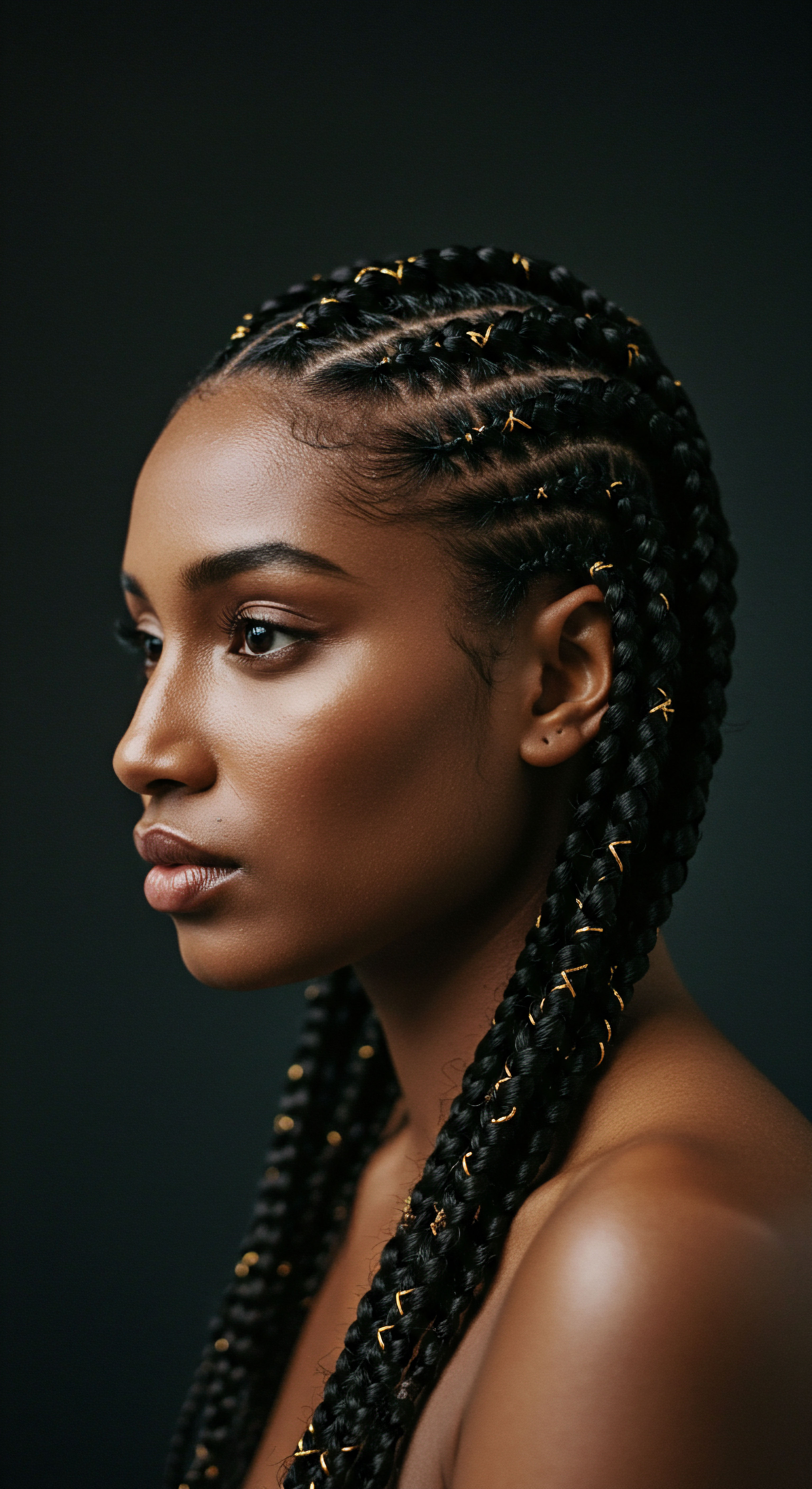
The Role of Protective Styling
Beyond simple wrapping, many cultures employed specific hairstyles designed to protect hair overnight. Braids, twists, and buns were not only aesthetic choices but also practical solutions for nighttime care. These styles minimize exposure to friction and keep hair strands grouped together, preventing individual strands from rubbing against surfaces or each other.
For example, a loose braid, particularly a single or double braid, is a common protective style that has transcended time and geography. It keeps hair contained while allowing the scalp to breathe. For very long hair, a bun positioned at the crown of the head could also keep lengths off the neck and away from friction-prone areas of the pillow. The aim was always to reduce tension and maintain the integrity of the hair’s structure.
| Technique Braiding |
| Description Securing hair into one or more plaits. |
| Benefit Minimizes tangling and friction. |
| Technique Wrapping |
| Description Covering hair with cloth or scarf. |
| Benefit Shields from environmental elements, retains moisture. |
| Technique Bunning |
| Description Gathering hair into a loose coil on top of the head. |
| Benefit Keeps hair off the neck and pillow. |
| Technique These practices demonstrate an enduring wisdom in preserving hair health through the night. |
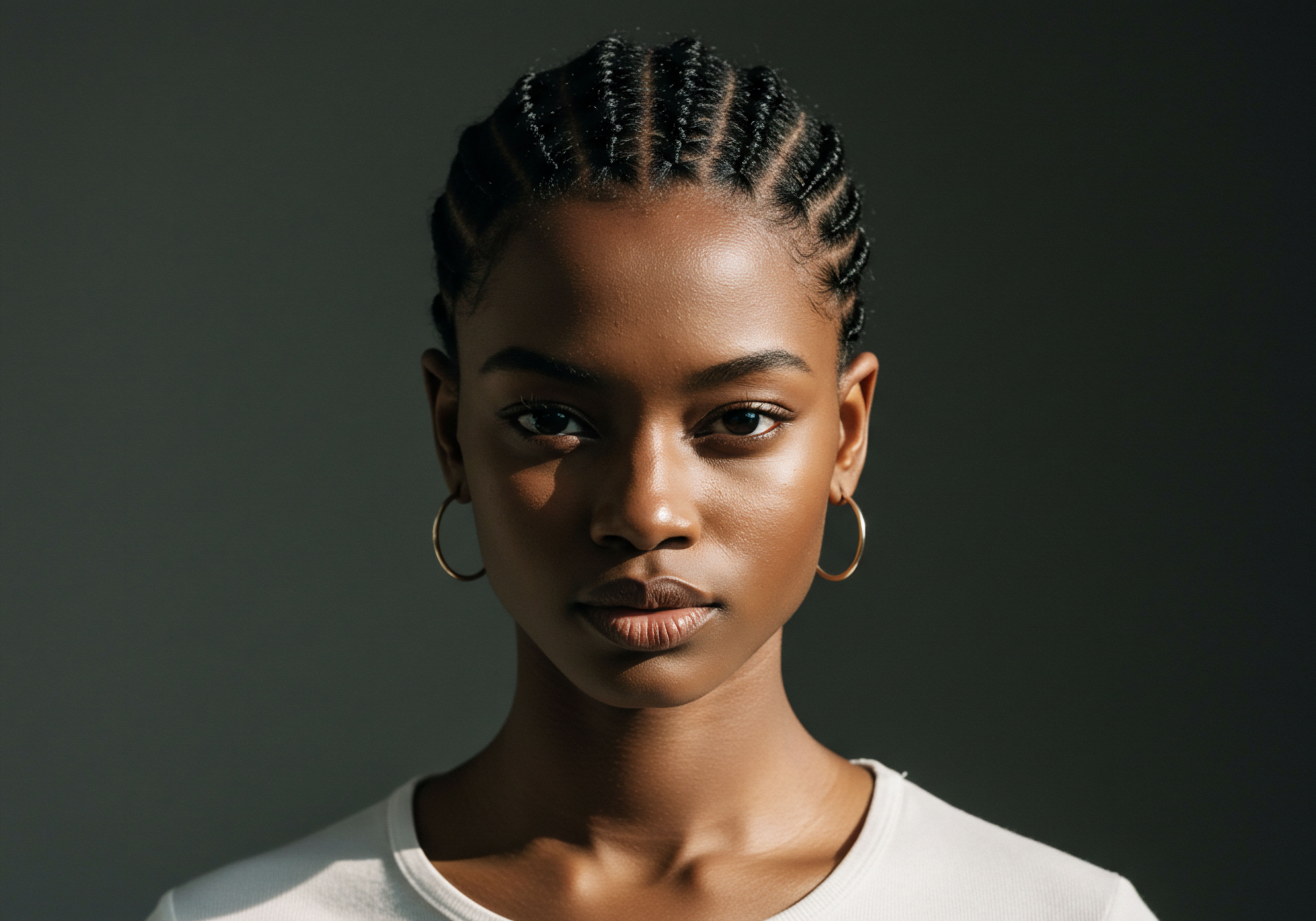
Relay
As we delve deeper into the customs surrounding nighttime hair protection, we uncover a sophisticated interplay of material science, cultural meaning, and the human psyche. The seemingly simple act of preparing hair for sleep reveals layers of complex understanding, connecting historical practices to contemporary scientific insights. How did ancient peoples, without the benefit of modern scientific instruments, arrive at practices that align so closely with what we now apprehend about hair’s delicate biophysics? This section seeks to bridge that historical intuition with contemporary data, illuminating the enduring wisdom embedded in these customs.

What Microscopic Realities Guided Ancient Practices?
The protective measures adopted by various cultures, particularly those with highly textured hair, were responses to the inherent vulnerabilities of the hair strand itself. Textured hair, with its unique helical structure and often raised cuticle layers, is more susceptible to moisture loss and mechanical damage from friction. The twists and turns along the hair shaft present more surface area for abrasion and make it easier for strands to tangle upon contact with rough surfaces. This physical reality, though not formally articulated in scientific terms by ancient communities, was keenly observed and understood through generations of lived experience.
Consider the impact of friction. When hair rubs against common sleeping surfaces like cotton pillowcases, the individual hair cuticles can lift, leading to frizz, breakage, and dullness. While silk and satin are widely recognized today for their smooth surfaces, offering reduced friction, historical communities employed what was available. A study published in the Journal of Cosmetic Science in 2014, titled “The effect of fabric surface properties on the frictional damage of hair,” by D.
L. P. M. de Jong and colleagues, provided quantitative data supporting the long-held anecdotal wisdom regarding fabric choices.
The research demonstrated that fabrics with lower coefficients of friction significantly reduced mechanical damage to hair cuticles. This scientific validation underpins why smooth materials, or materials rendered smoother through processing or treatment, were intuitively favored or prepared in ways that minimized hair snagging and abrasion, even if the precise scientific mechanism was unknown. This was a silent, empirical science passed down through observation and efficacy.

How Did Material Choices Shape Hair Preservation?
Ancient Egyptians, for example, were known to use oils like papyrus seed oil and castor oil for hair care, often leaving them on overnight for deep conditioning. This practice not only nourished the hair but also likely created a smoother surface on the hair strands themselves, further reducing friction against sleeping surfaces. While they might have worn wigs for daily wear and removed them at night, the underlying natural hair still required care.
The Romans, too, had nighttime applications, albeit sometimes for less conventional purposes like preventing graying with herb and earthworm pastes. While these specific concoctions might not directly relate to mechanical protection, they underscore a universal historical understanding of nighttime as a period for hair treatment and maintenance.
Historical hair protection practices, while lacking modern scientific labels, intuitively addressed hair’s vulnerabilities, aligning with contemporary studies on friction and material impact.
The careful selection and preparation of natural materials for wraps and coverings also played a vital role. Even if not silk, certain finely spun or treated plant fibers could offer a smoother glide than untreated, coarser materials. The cultural significance placed on head coverings in many African and Afro-Caribbean societies meant that considerable skill and knowledge were invested in their creation and application, inadvertently optimizing them for hair protection.

Beyond the Physical ❉ The Psychological and Social Dimensions
The practices of nighttime hair protection extend beyond mere physical preservation; they carry significant psychological and social weight. For communities that have faced historical oppression and systemic attempts to devalue their appearance, the care and protection of textured hair became an act of resistance and self-affirmation. During periods of slavery in the United States, enslaved Black women used headwraps not only for practicality in labor but also as powerful symbols of dignity, cultural identity, and resilience against efforts to strip them of their heritage. The act of covering hair at night, maintaining its health and form, became a private, quiet rebellion, a refusal to let external forces dictate their self-perception.
This tradition of self-care through hair protection continues to resonate deeply today. Studies on the self-value and identity of African American women often highlight the significance of hair practices. For many, the choice to wear natural hair and care for it diligently, including nightly protection, is a conscious act of self-love and cultural connection.
It serves as a personal ritual that reinforces positive self-image and a sense of belonging within a community that values its unique beauty. The quiet moment of wrapping hair before bed can be a meditative pause, a connection to ancestral practices, and a daily commitment to one’s well-being.
The table below illustrates how cultural practices intersect with practical benefits for textured hair.
| Cultural Practice Headwrapping |
| Primary Cultural Significance Identity, status, resistance, spiritual connection. |
| Direct Hair Protection Benefit Reduces friction, retains moisture, preserves styles. |
| Cultural Practice Oiling Rituals |
| Primary Cultural Significance Nourishment, ceremonial preparation, beauty enhancement. |
| Direct Hair Protection Benefit Conditions hair, minimizes dryness, aids in detangling. |
| Cultural Practice Protective Braiding |
| Primary Cultural Significance Symbolism of strength, community bonding, aesthetic. |
| Direct Hair Protection Benefit Prevents tangles, reduces breakage, maintains style. |
| Cultural Practice These intersections reveal a profound and enduring connection between cultural expression and practical hair care. |
This interplay underscores that protecting textured hair at night is not merely a cosmetic concern; it is a deeply embedded practice that carries the weight of history, the wisdom of generations, and the strength of cultural identity. It is a quiet, powerful testament to the resilience and resourcefulness of people who understood their hair, its needs, and its meaning, long before modern science could offer its explanations.
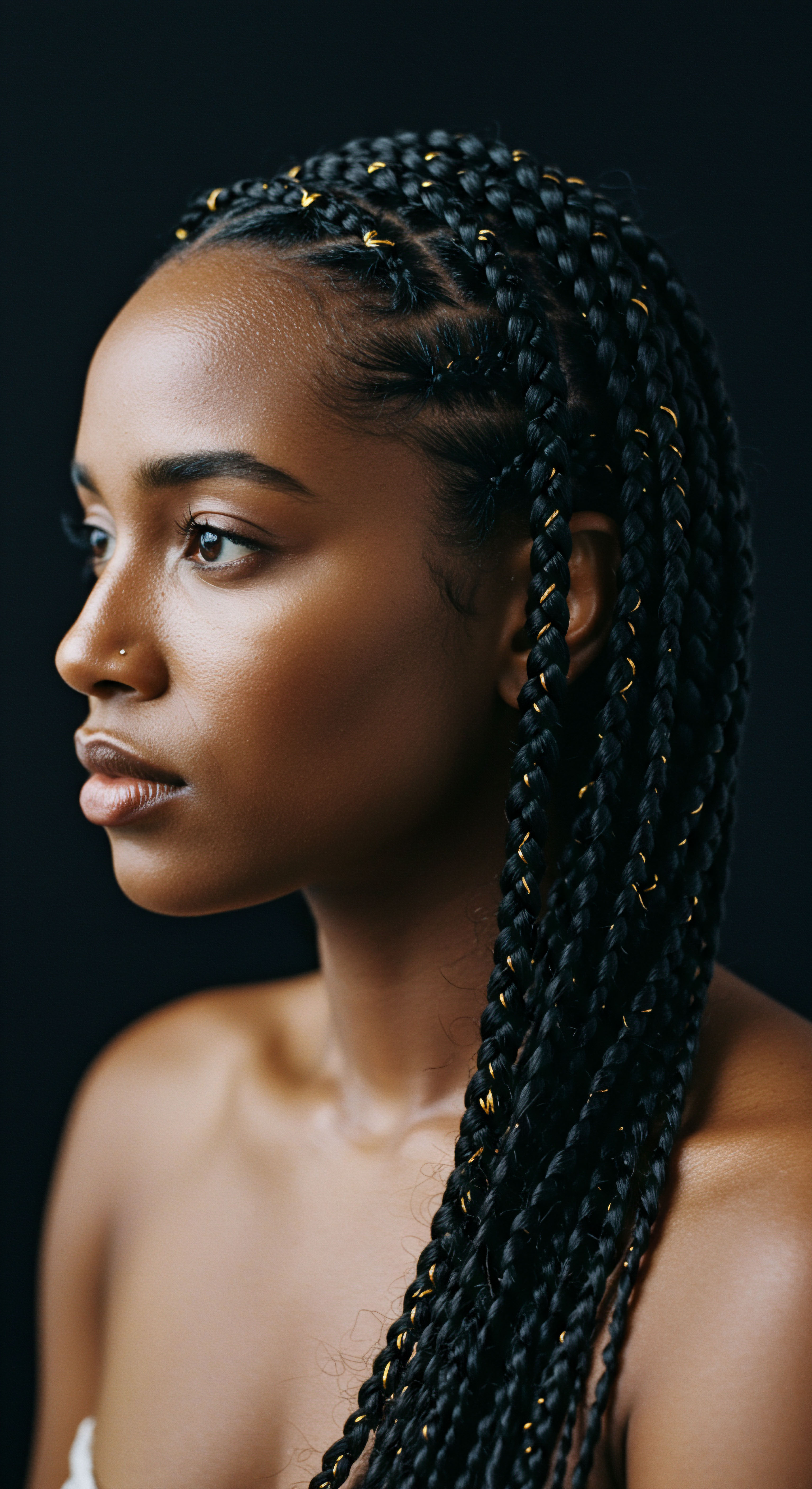
Reflection
As the soft veil of night descends, bringing with it the promise of rest, the preparation of textured hair for sleep remains a quiet, enduring practice. It is a testament to the ingenuity and deep care passed down through countless hands, across vast distances, and through shifting epochs. This journey through historical and cultural practices reveals not a simple routine, but a profound dialogue between self, heritage, and the natural world. Each wrap, each braid, each application of oil whispers stories of resilience, beauty, and an intimate understanding of hair’s delicate needs.
The wisdom of our ancestors, refined over centuries, continues to illuminate our path, reminding us that true care is often found in the gentle, consistent acts of preservation. In these quiet moments, we do more than protect our strands; we honor a legacy, reaffirm identity, and prepare for the new day with grace.

References
- Byrd, A. & Tharps, L. (2001). Hair Story ❉ Untangling the Roots of Black Hair in America. St. Martin’s Press.
- Dabiri, E. (2020). Twisted ❉ The Tangled History of Black Hair Culture. Harper Perennial.
- Davis, A. S. (2017). Hair, Identity, and Self-Esteem ❉ The Role of Hair Care Practices Among African American Women.
- de Jong, D. L. P. M. et al. (2014). The effect of fabric surface properties on the frictional damage of hair. Journal of Cosmetic Science, 65(2), 117-126.
- Kedi, C. (2019). Beautifying the Body in Ancient Africa and Today. Books of Africa.
- Matjila, C. R. (2020). The Meaning of Hair for Southern African Black Women. University of the Free State.
- Roseborough, I. E. & McMichael, A. J. (2007). Hair Care Practices in African-American Patients. Clinics in Dermatology, 25(1), 104-108.
- Wong, N. Williams, K. Tolliver, S. & Potts, G. (2025). Historical Perspectives on Hair Care and Common Styling Practices in Black Women. Cutis, 115(3), 95-98.